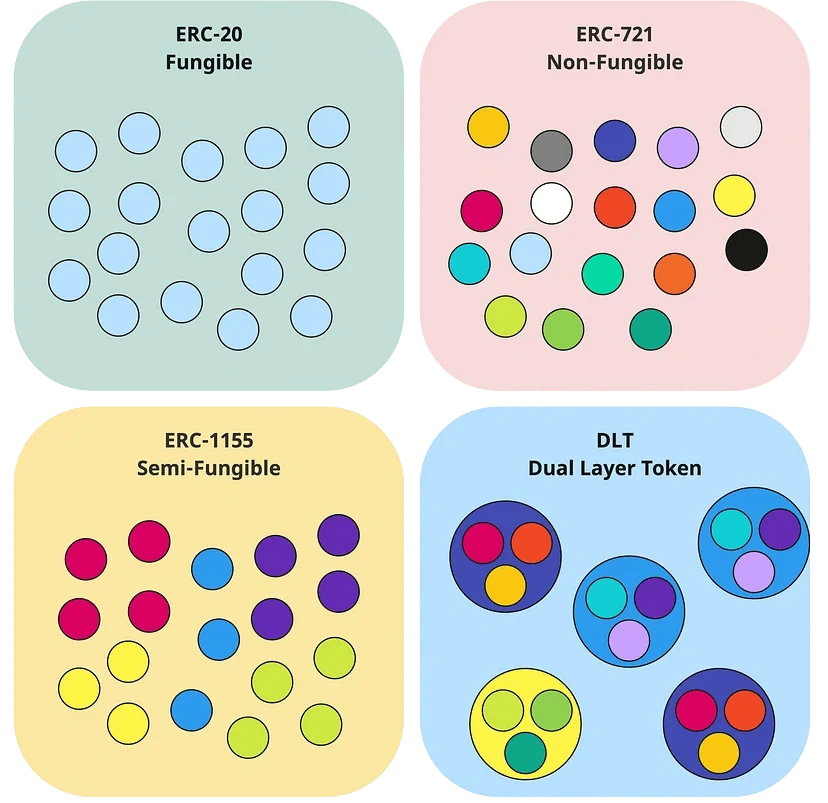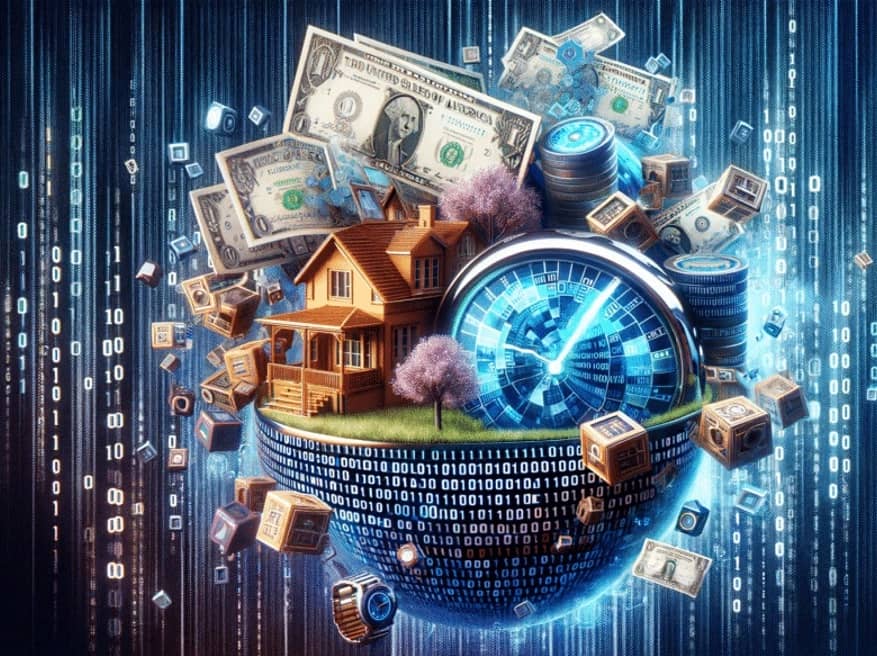위키 구독하기
Share wiki
Bookmark
Real World Assets (RWAs)
Real World Assets (RWAs)
**실물자산(RWA)**는 블록체인 상에서 전통적인 금융 자산을 나타내는 균질 또는 대체불가능토큰(NFT)입니다. RWA는 부동산과 같은 유형 자산이나 정부 채권 및 탄소 배출권과 같은 무형 자산을 나타낼 수 있습니다.[1]
개요
실물자산(RWA)은 부동산, 기계, 저작권 및 특정 계약과 같이 가치가 있고 물리적 세계에 존재하는 유형 또는 무형 자산을 의미합니다. 디지털 또는 가상 자산과 달리 RWA는 물리적 존재 또는 실제 세계의 유용성을 가지는 반면, 디지털 자산은 디지털 영역에만 존재합니다.
DeFi 분야에서 RWA는 대출 및 기타 금융 상품에 대한 담보로 사용되어 전통 금융과 디지털 금융 간의 간극을 메우고 있습니다. RWA는 특정 부동산 투자와 같이 일반적으로 유동성이 낮은 자산의 유동성을 높입니다. 또한 RWA는 부분 소유를 가능하게 하여 더 많은 사람들이 진입 장벽이 높은 자산에 투자할 수 있도록 함으로써, 전통적으로 부유한 개인이나 기관 투자자에게만 국한되었던 투자 기회를 민주화합니다.[3]
급속도로 발전하는 Web3 산업에서 실물자산(RWA)의 토큰화는 물리적 및 금융 자산의 소유권을 블록체인 상에서 디지털화하여 유동성을 크게 높이고 부분 소유를 가능하게 하며, 가치 창출을 재정의할 수 있는 엄청난 잠재력을 가지고 있습니다.[3]
ERC-6960에 의한 토큰화된 RWA: 이중 계층 토큰
가장 일반적인 토큰인 ERC-20과 ERC-721은 각각 균질(상호 교환 가능) 및 비균질(고유) 자산을 나타냅니다. 그러나 이들은 자산의 분할 소유권을 나타내는 데에는 부족합니다. 예를 들어, 누군가가 부동산이나 귀중한 예술품에 투자하려면 전체 자산을 구매해야 합니다. 이는 일반인에게는 너무 비싼 경우가 많습니다. 바로 여기서 ERC-6960이 등장합니다.[4]
-
ERC-20: 균질 토큰에 사용되는 가장 일반적인 토큰 표준입니다. ERC-20 토큰은 이더리움 블록체인에서 스마트 계약을 생성하고 발행하기 위한 표준입니다. 균질 토큰은 통화처럼 상호 교환 가능합니다. 그러나 ERC-20은 비균질 또는 반균질 토큰을 지원하지 않으며 분할 소유권도 허용하지 않습니다.[6]
-
ERC-721: 대체불가능토큰(NFT)에 대한 표준입니다. 각 ERC-721 토큰은 고유하므로 고유한 품목이나 자산의 소유권을 나타내는 데 적합합니다. 그러나 ERC-20과 마찬가지로 ERC-721은 분할 소유권을 지원하지 않습니다.[7]
-
ERC-1155: 균질 및 대체불가능토큰(NFT)을 모두 지원하는 더욱 고급 표준입니다. ERC-20 및 ERC-721보다 유연하지만 여전히 일부 기능이 부족합니다. 분할 소유권에 대한 기본 지원이 없으며 동일한 계약 내에서 다양한 자산 유형을 관리하는 것이 비효율적일 수 있습니다.[8]
ERC-6960은 이더리움 블록체인의 토큰 표준으로, 기존 토큰 표준의 한계를 해결하도록 설계되었습니다. ERC-6960은 분할 소유권을 지원하는 실물자산(RWA)을 나타내므로 단일 자산을 더 작은 부분으로 나눌 수 있으며 각 부분은 다른 사람이 소유할 수 있습니다. ERC-6960은 토큰화된 RWA를 나타내고 관리하기 위한 유연한 프레임워크를 제공합니다.[4][5]

장점과 과제
토큰화의 장점
RWA는 전통 금융과 디지털 공간을 연결하여 DeFi가 고객과 기업에 다음과 같은 이점을 제공할 수 있도록 합니다.[2]
- 유동성: 토큰화는 부동산이나 미술품과 같이 전통적으로 유동성이 낮은 자산의 유동성을 높일 수 있습니다. 분할 소유권은 소규모 투자자들이 시장에 참여할 수 있도록 하여 수요와 유동성을 증가시킵니다. 예를 들어, 여러 투자자가 분할을 통해 부동산의 지분을 소유할 수 있습니다.
- 접근성: 진입 장벽을 허물어 토큰화는 이전에는 부유하거나 기관 투자자에게만 국한되었던 투자 기회에 대한 접근성을 민주화합니다.
- 투명성 및 보안: 블록체인 기술을 활용하면 모든 거래가 투명하고 불변하며 안전하게 이루어집니다. 모든 토큰 거래가 기록되므로 사기나 자산 조작이 어렵습니다.
- 비용 효율성: 토큰화는 중개자의 필요성을 줄여 프로세스를 간소화하고 비용을 절감할 수 있습니다.

잘못된 내용이 있나요?
